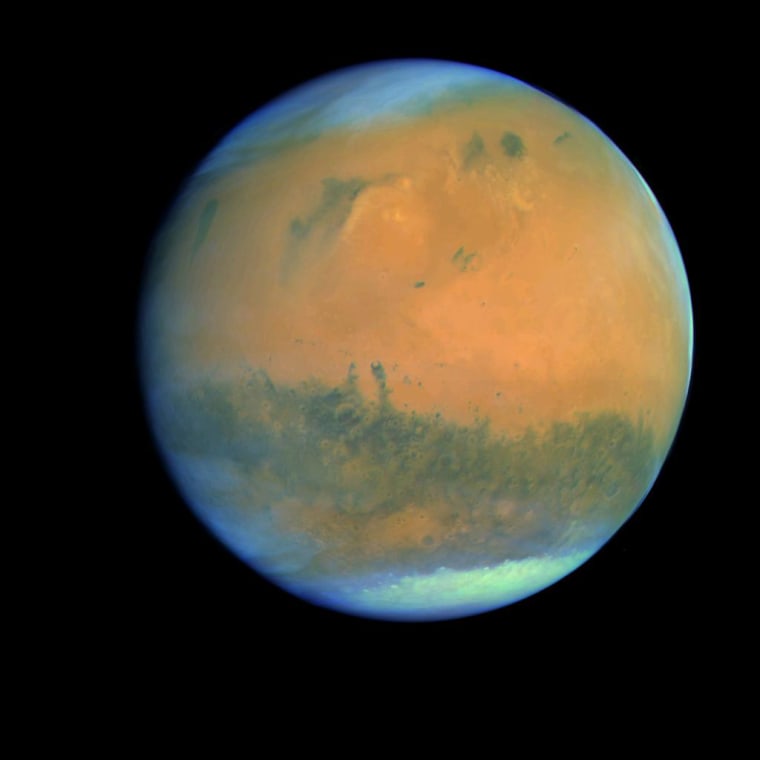A European spacecraft executed a close flyby of Mars on Sunday, a crucial maneuver in its meandering, 10-year voyage through the solar system to make the first soft landing on a comet.
Applause broke out in the European Space Agency’s mission control center as the Rosetta comet probe’s radio signal was picked up after 15 minutes of silence as the craft passed behind the Red Planet. The maneuver, which used the planet’s gravity to change course, sends the craft toward two similar flybys of Earth this year and in 2009.
“Rosetta is on its way,” said Manfred Warhaut, head of mission operations.
The momentum gained from these flybys will sling the spacecraft toward its final rendezvous with the comet 67/Churyumov-Gerasimenko in 2014. The 3-mile long irregular chunk of ice, frozen gases and dust, is named for its discoverers, Soviet astronomers Klim Churyumov and Svetlana Gerasimenko.
The craft passed barely 150 miles from Mars. The navigation had to be precise, as a mistake could not be corrected.
Flying in the dark
It was a maneuver the craft was not designed to make, taking it into Mars’ shadow where its solar panels could not generate electricity to keep it alive. The original Rosetta mission would have taken it on a course where it did not fly through shadow but a launch delay forced a change to a different target comet.
ESA officials solved the problem by shutting off many of the spacecraft’s instruments and using its batteries, untested since its launch almost three years go.
Rosetta flew from shadow into a Martian sunrise at 3:40 a.m. Sunday and regained solar power and a radio signal.
The successful flyby “is fundamental to the mission,” said spacecraft operations manager Andrea Accomazzo. “If we don’t do this, we don’t have a mission.”
“It’s a very big success, so we are very happy — and we can go to sleep now.”
Ambitious mission
Rosetta is scheduled to orbit the comet as it hurtles around the sun and release a small lander that will make the first touchdown on a comet. The lander will seek to drill into the surface and radio back an analysis of its makeup.
Slideshow 12 photos
Month in Space: January 2014
Because the comet’s gravity is so weak, the lander will use a harpoon and spikes to anchor itself to the surface. Researchers hope the robotic explorer will be able to photograph the appearance of the comet’s tail, a stream of gases and dust that arises when the icy body warms as it approaches the sun.
Comets are among the most primitive objects in the 4.6-billion-year-old solar system, and analyses of their composition could shed light on the system’s early history.
In 2004, NASA’s Stardust mission flew by a comet, collected thousands of particles that streamed off its surface and returned them to Earth.
A year later, NASA’s Deep Impact launched a probe the size of a coffee table that struck the comet Tempel 1 with tremendous force, excavating materials from deep within its interior. Instruments on the flyby spacecraft analyzed the resulting debris.
Rosetta’s lander is designed to study comet surface for at least 65 hours, but could continue working for months.

